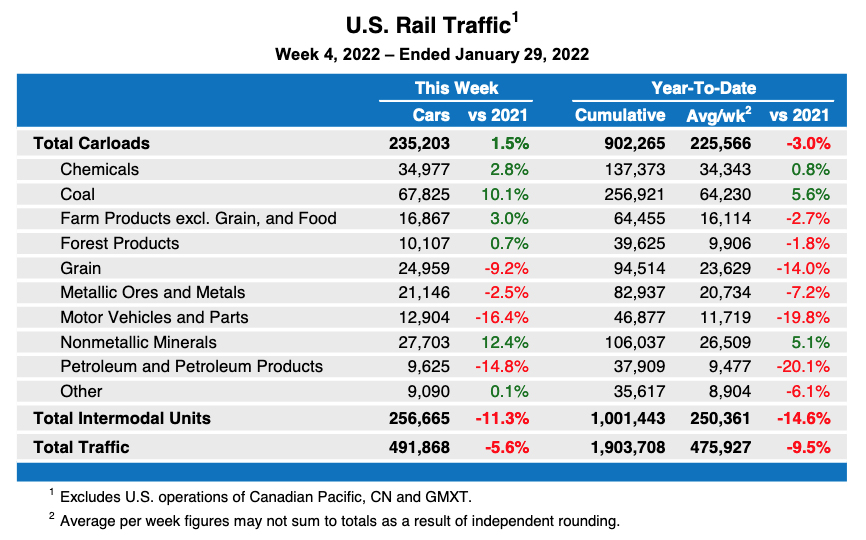
WASHINGTON — U.S. rail traffic was down 9.5% in January compared to January 2021, mostly because of a significant drop in intermodal traffic, according to Association of American Railroads statistics.
Intermodal traffic was down 14.6%, while carload traffic was down 3%, with 14 of 20 carload categories tracked by the AAR showing declines.
“For most traffic categories, U.S. rail volumes this January were down compared to last year,” AAR Senior Vice President John T. Gray said in a press release. “That said, last January made for very difficult comparisons for a number of categories. For example, January 2021 was the best January for grain since 1990, and was also, at the time, the highest volume month ever for intermodal. Conversely, and more optimistically, this year’s January was the highest volume month ever for rail carloads of chemicals, providing a strong base for future growth in a critical commodity.”
Notable carload declines included grain, down by 15,396 carloads or 14%; motor vehicles and parts, still impacted by a chip shortage slowing production, down 11,559 carloads or 19.8%, and petroleum and petroleum products, down 9,509 carloads or 20.1%.
Weekly traffic stats remain down
Weekly traffic stats for the week ending Jan. 29 marked the fourth straight week with volume below 2021 levels. Overall traffic of 491,868 carloads and intermodal units represented a decline of 5.6% compared to the same week in 2021 — the smallest single-week decline so far this year.
The 235,203 carloads marked a 1.5% increase, while intermodal trailers and containers were down 11.3%.
North American totals for the week, for 12 reporting U.S., Canadian, and Mexican railroads, showed a total volume of 667,964 carloads and intermodal units, a decrease of 6.3% compared to the same week in 2021. That includes 330,400 carloads, down 1.5%, and 337,564 intermodal units, down 10.6%. Year-to-date North American volume is down 10.9% compared to the first four weeks of 2021.













